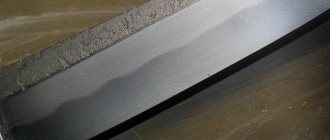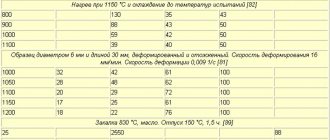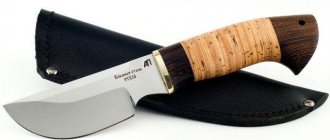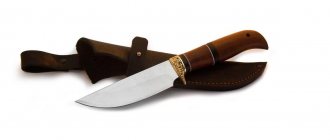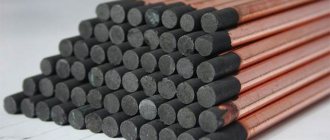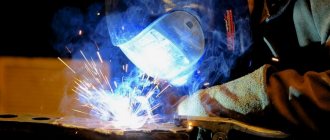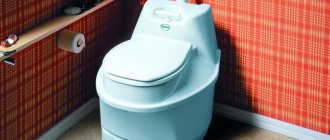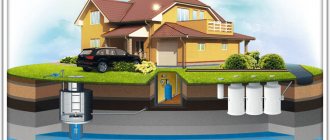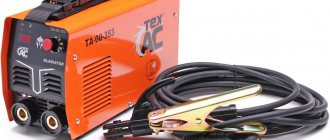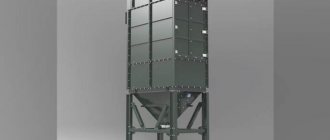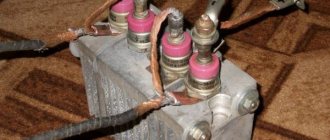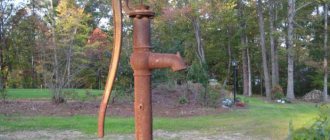Iron combines with carbon to form steel. The proportions of these chemical elements may vary depending on the application and required properties. To achieve good strength and the required durability, components are added to alloys that are needed to improve the properties of the metal. Many gunsmiths set themselves the task of creating high-strength steel for a knife, while at the same time hardness should not suffer. 65G steel is popular these days.
Sheets of spring steel 65G.
Characteristics
Low cost has made 65g steel quite popular. But due to its poor corrosion resistance, the material is almost never used for making kitchen knives. When hardened, the alloy is not afraid of overheating. But at high temperatures, impact strength decreases. The hardening temperature ranges from 800 to 8200 C.
pros
The main advantage is the low cost of the product. It was this factor that made the brand quite popular. In addition to this advantage, there are the following advantages:
- Impact and deformation resistance.
- Increased hardness, preventing destruction, brittleness or brittleness under heavy loads.
- Ease and speed of sharpening.
- High tensile strength.
All of the above-described properties of the alloy are ensured due to the presence of the alloying element manganese.
Minuses
There are no ideal materials in nature. In addition to the advantages, you can find disadvantages:
- Like any carbon-containing alloy, it has low corrosion resistance and rusts very quickly.
- Knives made of 65G steel tend to be easy to sharpen, but they also become dull quickly. Therefore, the cutting edge must be constantly monitored and, if necessary, sharpened more often.
- Limited applicability of cutting tools.
All pros and cons are relative.
Spring production
Vacation
The main application of steel is in the production of spring products.
The metal is usually supplied in the form of rods, but other options are also possible, such as sheets and wire, as well as forged blanks. The characteristics and quality of the finished product are greatly influenced by its heat treatment.
When producing products from heavy-duty wire, it is necessary to temper the elements at temperatures from 250 °C to 350 °C; this procedure is performed to remove the internal stress created during production and, of course, to increase the elasticity of the product turns.
The above procedure is usually carried out in saltpeter baths, but can also be performed in chamber electric or oil furnaces. In the case of electric furnaces, the retention time is 10 minutes, and in the case of oil furnaces - 40 minutes.
https://youtube.com/watch?v=-tQzLA2VFPc
To heat the springs for hardening, they are placed in salt baths or chamber furnaces preheated to a certain temperature. To avoid deformation of large-sized products, they are heated in a device specifically designed for this purpose.
Small springs
Small springs for hardening in the oven are placed on a special baking sheet. Oven dwell time should be kept to a minimum to prevent oxidation and decarburization. To reduce the residence time of small springs in the oven, they are placed on a baking sheet preheated to a certain temperature.
If the furnace does not have a protective atmosphere, the springs must be packed in an insulating medium and a small amount of charcoal must be added.
The springs are cooled in oil. Cooling in water is highly not recommended, as cracks may appear on the surface. If cooling in water is necessary, then the holding time should be 2-3 seconds, after which the finished product should be placed in oil.
https://youtube.com/watch?v=vfD5I4Trnx8
Release of small springs
Before releasing the springs, they must be cleaned of oil by washing with a soda solution or by rubbing in sawdust. If, after cleaning, oil that has not been removed remains on the surface of the springs, it may flare up during release and change the conditions of the release procedure. The recommended tempering temperature is from 300 to 420 degrees Celsius. The outer turns must be annealed in a lead bath.
Before releasing, large springs must be placed on thick pipes to avoid corrosion when heated.
It is necessary to pay attention to the surface of the material intended for the manufacture of springs. All kinds of defects can lead to cracks, and decarburization of the top layer leads to a decrease in the elasticity of the product
Often, when using anti-corrosion coatings, which are sometimes used for application, the springs become brittle due to the oversaturation of the steel with hydrogen. This is very noticeable on a spring made of wire or tapes of small sections. This fragility is called etching and is corrected by heating the finished product in an oven at a temperature of 150-180 degrees Celsius for 1.5-2 hours.
If the etching time is long, the metal is so highly saturated with hydrogen that heat treatment does not help eliminate brittleness and it becomes necessary to anneal the springs. To avoid oversaturation of the steel with hydrogen, pickling should be avoided before the coating process, but should be sandblasted and heated only after coating using the method described above.
Annealed metal springs
If the springs are made from annealed metal, then, most likely, it may be necessary not only to harden the metal, since its hardness will play a major role. For example, when using thick (more than 6 mm) wire in production, it is necessary to temper at a temperature of about 720 degrees Celsius. This is done in order to give the finished product strength and only then harden it. Regarding those parts that are wound while heated: in any case, normalization is necessary here, which is performed at the very beginning of metal processing, before other processes.
Chemical composition of steel
The alloying element present in this grade is manganese, its amount ranges from approximately 0.90 to 1.20%. Manganese is needed to get rid of iron oxides. It also serves to increase the tensile strength, increase the hardness and elastic limit, and for additional compaction of the steel. These characteristics are of great importance for the alloy. Based on its original use, it was called spring-spring.
The composition contains silicon in large quantities (from 0.17-0.37%). It affects elasticity, increasing it, but at the same time, impact strength is significantly reduced. Chromium (its amount is about 0.25%) increases mechanical properties under loads: shock and static. Its content also increases heat resistance and cutting properties.
Phosphorus and sulfur are considered harmful impurities; their presence negatively affects quality. But this deficiency in 65g steel is compensated by the presence of a large amount of manganese.
The table shows the chemical composition of 65G steel:
| Iron (Fe) | Carbon (C) | Manganese (Mn) | Silicon (Si) | Phosphorus (P) | Sulfur (S) |
| 97% | 0,62-0,7% | 0,9-1,2% | 0,17-0,37% | Less than 0.035% | Less than 0.035% |
Decoding
In carbon steels, the content of this chemical element is indicated as a percentage. As a rule, the value appears in the name 65% carbon. The presence of the alloying element manganese in accordance with GOST is indicated by the letter G.
GOST
The production of 65g steel is regulated by GOST 14959-2016. The document applies to hot-rolled and forged steel. The standard normalizes the chemical composition.
Knife blade made of steel 65G.
Technology of hardening and tempering of spring steel
To obtain metal with the desired physical properties, spring steel is tempered and hardened. Each stage has its own technological features:
- First, the spring steel is hardened at high temperatures. Thanks to hardening, the yield strength of the material increases significantly, which makes the steel elastic, malleable, and stable.
- However, during high-temperature hardening, martensitic compounds are formed inside the alloy, which sharply worsen the elasticity of the material, making it unusually brittle and hard.
- To get rid of martensitic compounds, spring steel should be tempered at low temperatures. During such processing, martensites are destroyed, which makes it possible to obtain a material with the desired properties.
Please note that the temperature and processing time at each stage depend on what grades of spring steel are used. For example: spring steel grade 65G must be hardened at a temperature of +800-850 degrees, tempered at +200-300 degrees
In some cases, hardening and tempering are combined with the metal normalization procedure. This procedure allows you to get rid of excess stress inside the metal, but in most cases normalization occurs on its own as the material cools. Therefore, additional processing by normalization is usually not required.
Thermal hardening
Hardening of spring steel is carried out taking into account the following parameters:
- Method of heating metal, nature of cooling of material, ambient temperature.
- Metal composition, presence and type of alloying additives, total carbon concentration.
- A method of maintaining the required temperature range for hardening.
- Method of cooling the material after hardening, method of storing the material.
Low alloy steels are recommended to be heated quickly. After all, with slow heating, carbon gradually evaporates, which is critical for low-alloy materials. However, you don’t need to overdo it with the heating speed. If heating proceeds very quickly, then uneven heating of the material may occur. Because of this, the risk of the formation of various metal defects (cracks, edges, destruction of corners) increases.
The optimal heating method is to use two ovens. In the first furnace, the material is gradually heated to 500-700 degrees, and then it enters the second furnace, where final hardening occurs.
It is recommended to use gas ovens for heating. However, during heating, you should monitor the heat distribution to avoid the appearance of “thermal islands” on the metal. Electric ovens heat up quite slowly, so their use in this case is problematic from a practical point of view. The only exception to this rule is the hardening of thin metals, which do not require additional uniform heating for obvious reasons.
The holding time depends on many parameters, but on average the total hardening time is 80 minutes for combustion furnaces and 20 minutes for electric installations. The shape of the product also has a certain significance. When working with flat sheets, hardening can be carried out quickly. Whereas in the case of a material with a complex shape, it is recommended to perform additional heating. The best way to cool the material is in the open air.
Final thermal holiday
To avoid the appearance of hard martensitic fractions, it is necessary to perform thermal tempering immediately after quenching. The temperature regime also depends on what grade of spring steel has been hardened. Both combustion and electric furnaces can be used for tempering. The type of oven will also affect the length of the holiday.
Example: 65G steel is recommended to be subjected to high tempering at a temperature of +500-600 degrees. The cooling method is air. The holding time is 30-150 minutes depending on the type of oven. After hardening, it is recommended to carry out control measures. However, this should be done only after the material has completely cooled, so as not to damage the alloy.
Application
Steel 65G is widely used in mechanical engineering. The plastic properties of this brand have made it possible to make it a standard in the production of springs, springs, and thrust washers. Thanks to its hardness, it became possible to manufacture parts with increased wear resistance from it:
- Bearing housings.
- Brake flanges.
- Gear.
- Friction discs.
Steel 65G has been used in workshops for many years to make knives. This is due to the high hardness and low cost of the material.
However, there is such a huge drawback as susceptibility to rust. Therefore, the products require special care. More often, this steel is used to make throwing knives, sports or tournament weapons (swords, sabers, checkers).
characteristics, weight, hardness, analogues of steel grade 45
Steel grade: 45.
Class: high-quality carbon structural steel.
Industrial uses: Pinion shafts, crankshafts, camshafts, gears, spindles, bands, cylinders, cams and other normalized, tempered and surface heat treated parts that require increased strength.
Hardness: HB 10 -1 = 170 MPa
Weldability of the material: difficult to weld. Welding methods: RDS and KTS. Heating and subsequent heat treatment are required.
Forging temperature, oC: beginning 1250, end 700. Sections up to 400 mm are cooled in air.
Flock sensitivity: low sensitivity.
Tendency to temper brittleness: not prone.
Type of delivery:
- Long products, including shaped steel: GOST 1050-88, GOST 2590-2006, GOST 2591-2006, GOST 2879-2006, GOST 8509-93, GOST 8510-86, GOST 8239-89, GOST 8240-97, GOST 10702 -78.
- Calibrated rod GOST 1050-88, GOST 7417-75, GOST 8559-75, GOST 8560-78.
- Polished rod and silver GOST 14955-77.
- Thick sheet GOST 1577-93, GOST 19903-74.
- Thin sheet GOST 16523-97.
- Tape GOST 2284-79.
- Strip GOST 103-2006, GOST 1577-93, GOST 82-70.
- Wire GOST 17305-91, GOST 5663-79.
- Forgings and forged blanks GOST 8479-70, GOST 1133-71.
- Pipes GOST 8732-78, GOST 8733-74, GOST 8734-75, GOST 8731-74, GOST 21729-76.
| Foreign analogues of steel grade 45 | |
| USA | 1044, 1045, 1045H, G10420, G10430, G10440, G10450, M1044 |
| Germany | 1.0503, 1.1191, 1.1193, C45, C45E, C45R, Cf45, Ck45, Cm45, Cq45 |
| Japan | S45C, S48C, SWRCh55K, SWRCh58K |
| France | 1C45, 2C45, AF65, C40E, C45, C45E, C45RR, CC45, XC42h2, XC42h2TS, XC45, XC45h2, XC48, XC48h2 |
| England | 060A47, 080M, 080M46, 1449-50CS, 1449-50HS, 50HS, C45, C45E |
| European Union | 1.1191, 2C45, C45, C45E, C45EC, C46 |
| Italy | 1C45, C43, C45, C45E, C45R, C46 |
| Belgium | C45-1, C45-2, C46 |
| Spain | C45, C45E, C45k, C48k, F.114, F.1140, F.1142 |
| China | 45, 45H, ML45, SM45, ZG310-570, ZGD345-570 |
| Sweden | 1650, 1672 |
| Bulgaria | 45, C45, C45E |
| Hungary | A3, C45E |
| Poland | 45 |
| Romania | OLC45, OLC45q, OLC45X |
| Czech | 12050, 12056 |
| Austria | C45SW |
| Australia | 1045, HK1042, K1042 |
| Switzerland | C45, Ck45 |
| South Korea | SM45C, SM48C |
Properties of steel St 45
When purchasing metal products, you need to know the properties of the material from which they are made. The type of steel the product is made from affects its cost, strength, and reliability. This also determines the service life and possible scope of application.
In this case, you will find information about steel grade 45, which is often used for the manufacture of a variety of metal products. It is considered structural carbon quality. To purchase rolled metal products made from 45 steel, check out the company’s catalogs and contact our managers.
It is supplied in the form of long and shaped products. You can find an extensive list of products for which it is used. For example, silver, sheets of metal of different thicknesses, rods with different types of surface treatment, forgings and forged blanks, long wire products, tapes and strips, as well as pipes.
Steel 45 and its characteristics
- Low sensitivity to flakes.
- Steel 45 and its specific gravity: the figure is 7826 kg/m3.
- Not prone to temper brittleness.
- Heat treatment: Delivered condition.
- Steel hardness 45: the indicator is equal to the following values: HB 10 -1 = 170 MPa
The strength of this material is increased. That is why objects are made from it that can be normalized, improved, and whose surfaces can be subjected to heat treatment.
This material contains 0.45 percent carbon. Other impurities are extremely minor.
Steel is a difficult-to-weld material. To carry out the welding procedure, the steel must first be heated and then thermally treated. When forging, the temperature should first be 1250 degrees Celsius and finally drop to 700 degrees.
If the product has a cross-section that is less than or equal to 400 millimeters, then it can be cooled in air.
Recommendations when choosing
65g steel cannot be welded at all. When manufacturing products, this property should be taken into account.
You also need to remember that the material is most often used for sports edged weapons. This is due to good impact resistance at the simultaneous low cost of the starting material. This allows you to have shells available at low material costs.
Knife made of 65G steel.
Knives made from 65g are not recommended for use for household purposes, for example, in the kitchen, where there is constant dampness. To prevent cutting tools made from this grade from rusting, they must be stored in dry rooms. The oil coating will protect the blades from corrosion.
How to harden metal at home
There are a large number of methods, involving various techniques and other devices. However, in this article we will look at the two most popular ones, which are best suited for home use: in a stove or oven and over a fire.
There is no fundamental difference between these methods. The main thing is to place the knife or other product in the oven or fire and monitor its temperature.
The first step is annealing, that is, the main step of heat treatment.
It is important to monitor the temperature of the steel and prevent overheating. If there is no special device that can be used to measure its current indicator, you can evaluate it by the color of the heat:
- Orange - from 950 to 1000 degrees;
- Red-orange - from 900 to 950;
- Red - from 800 to 900;
- Darkish red - from 750 to 800 degrees;
- Red-burgundy - from 700 to 750;
- Burgundy - from 650 to 700;
- Brown-red - from 550 to 650;
- Reddish brown - 500 to 550 degrees.
You can also check the readiness of hardening using a regular magnet. If it stops “sticking” to the metal, then its temperature is about 760 degrees, and it is necessary to proceed to cooling as quickly as possible.
For a more convenient holiday, you can also check the color of the product, thus:
- Gray - 350 degrees;
- Blue - 300−350 degrees;
- Blue - 300 degrees;
- Purple - 280 degrees;
- Red-brown - 260 degrees;
- Yellow-brown - 250 degrees;
- Straw yellow - 240 degrees;
- Light yellow - 200−240 degrees.
So, as you can see, it is quite easy to harden a steel product at home. However, you should always remember safety precautions and also keep in mind the instructions described in this article.
